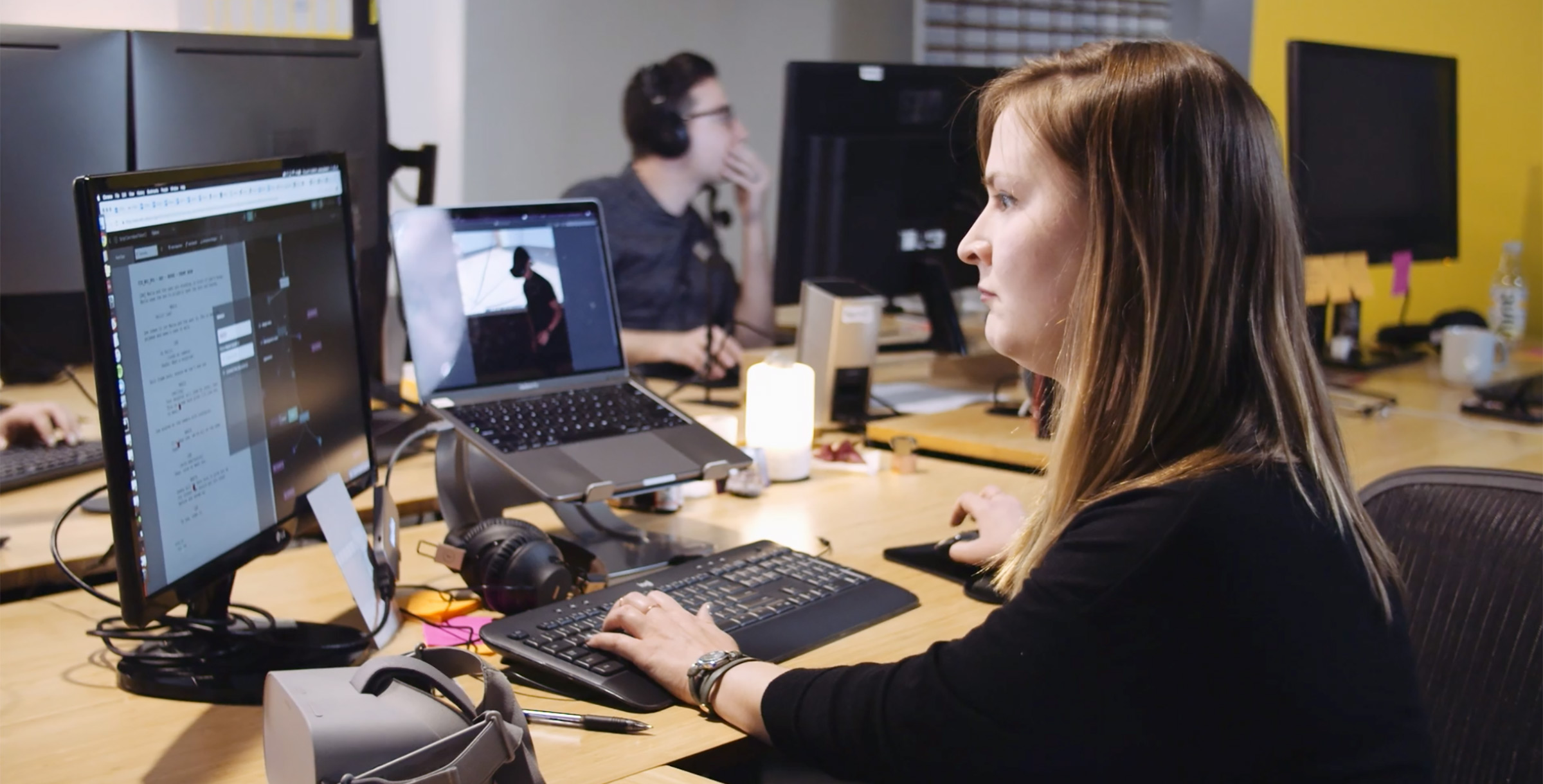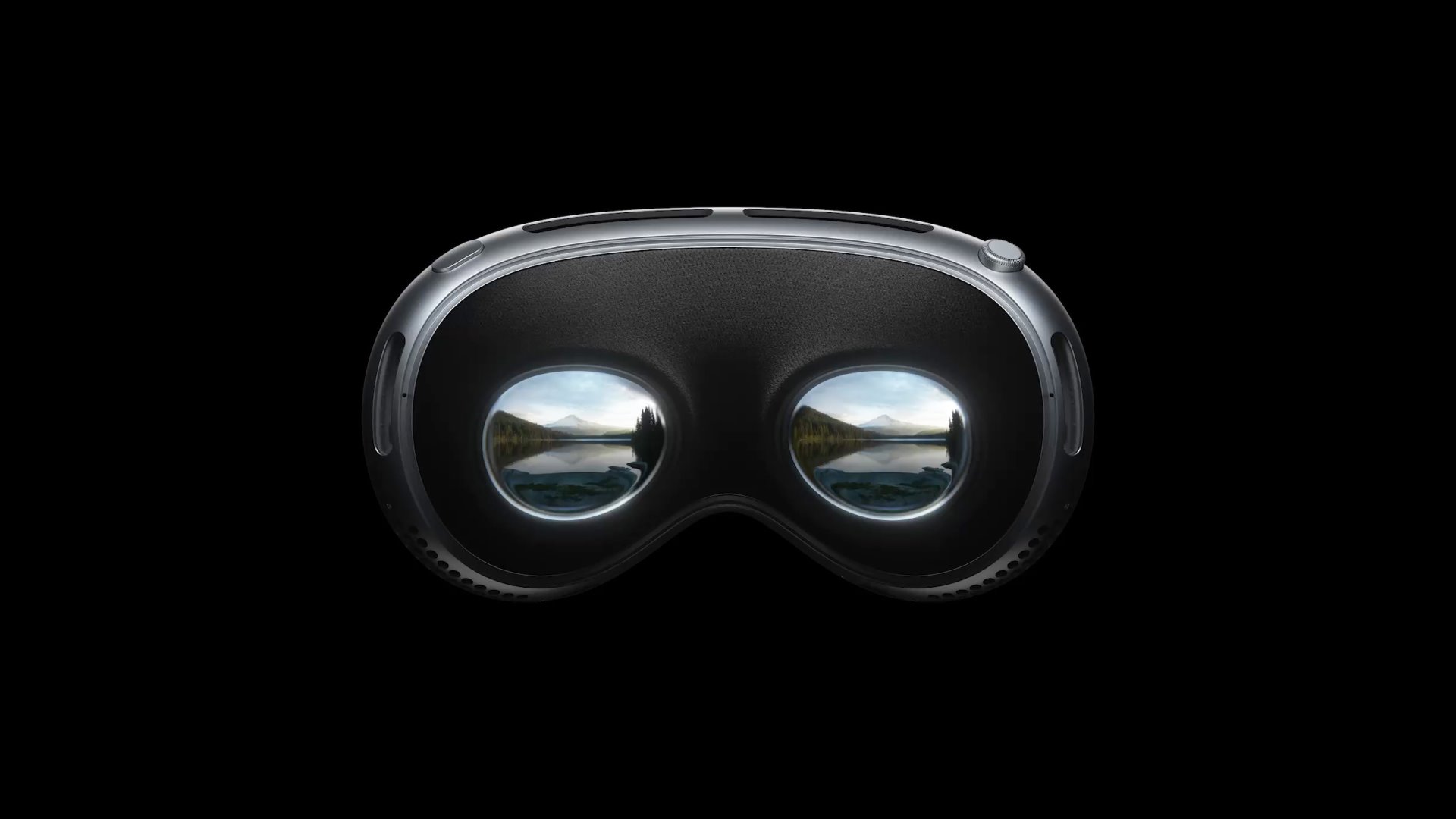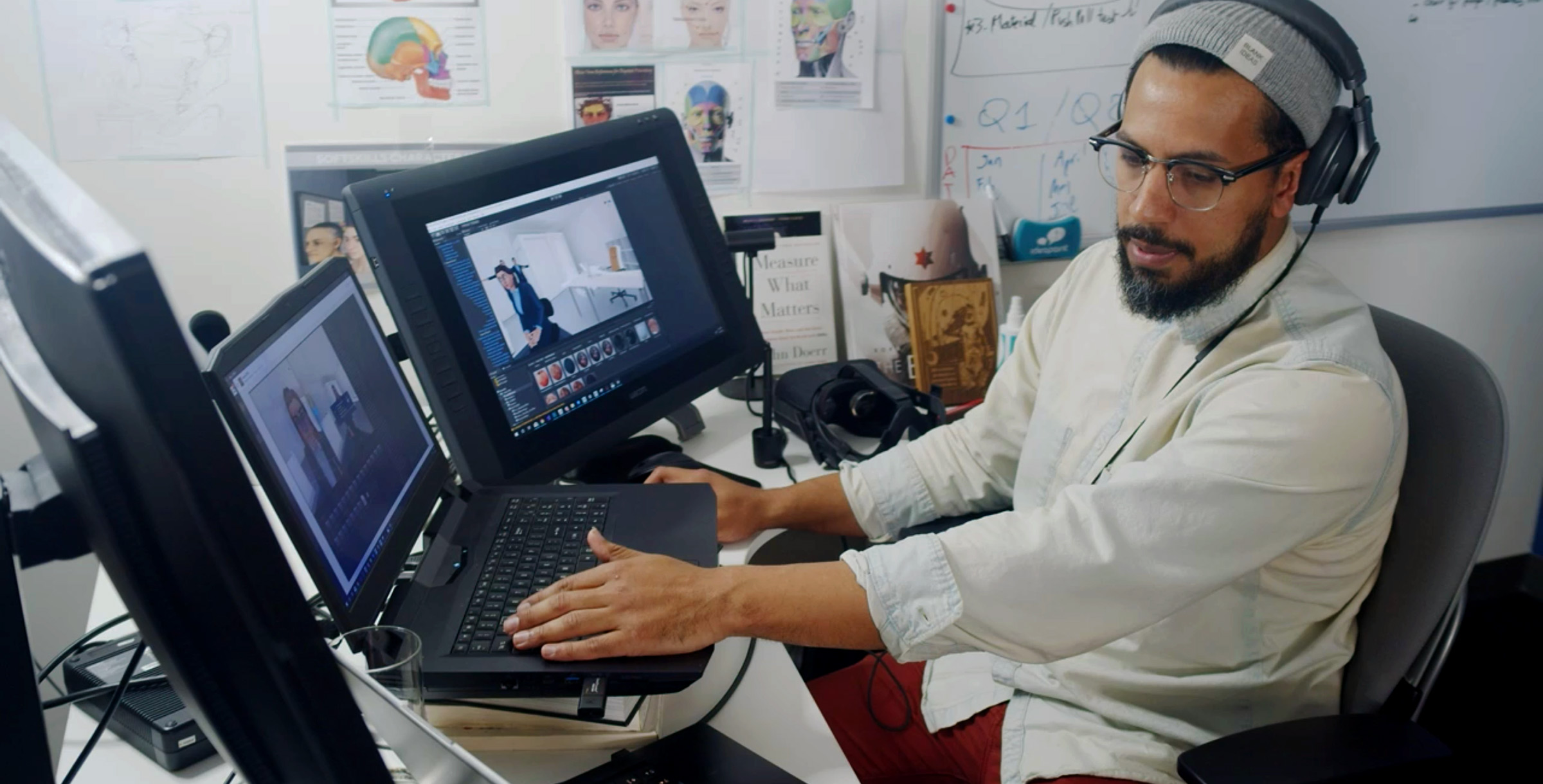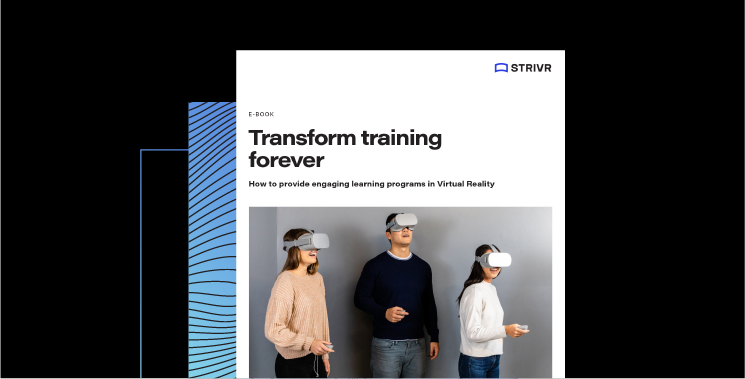“A lot of people are pretty mystified by VR as a whole,” says Marisa DeMarini, an Immersive Content Specialist here at Strivr. “The way an immersive training experience comes together might seem magical, but it’s really a series of very calculated steps that we’ve measured out.”
What steps go into making “magical” immersive experiences? How do you translate business needs into VR content? This is the role of an Immersive Content Specialist. As she creates modules, Marisa has a hands-on view of exactly how the immersive training solution comes together.
What is the role of an Immersive Content Specialist?
I categorize my role as being a hybrid between a filmmaker and a UX designer. I work with production to plan shoots with on-set crews to ensure we’re maximizing our use of 360-degree video. Then, I work with post-production to make sure it all flows together in the end product.
Ultimately, I’m responsible for everything that a learner sees and interacts with in the VR headset. I’m not just making a short film; I’m creating an experience that helps people learn.


What is the process for creating VR experiences that help people learn?
I start out working with the business, as well as with a solutions architect and an instructional designer, to find out more about the learning environment.
We get a better understanding of business objectives, which the instructional designer maps to learning outcomes while I determine how we can achieve the outcomes in 360-degree video.
We go on-site to the business location – almost like a location scout – so we can setup the most impactful video shoot in the right locations, while also taking note of the limitations of the space. That’s the co-development phase, which we call pre-production, where we map out the best experience according to the business’ needs and goals.
From there, I work hand-in-hand with the instructional designers to whiteboard the future experience. We go through rounds of script revisions, finding the best ways to tweak the dialog, the transitions and the overall experience for the user.
Then, we actually film it. It’s my job to ensure that all of the prep work we’ve done actually gets put into a production formula that makes sense and is achievable.
What is the filming process like?
In a sense, it’s pretty standard principle photography. I direct the talent, working with the solutions architect and instructional designer to make sure everything we set out to capture is captured. After everything is filmed, I’m responsible for overseeing creative direction in editorial and ensuring all of the assets are up to par.
Think of me as the director of the shoot; I work cross-functionally with post-production, solutions, and instructional design to make sure the VR training experience comes together in the best possible way.
What an immersive content specialist brings to the table is experiential expertise. We have extensive backgrounds in VR and film and have worked on dozens of projects, so we know what works and what doesn’t. I work to identify the best production value for the concept at hand, and find any way possible to augment that and make the best product for each customer.
I have to ensure that all the little moments of the user experience are mapped out and that every beat is landing where it should.
What kind of challenges do you run into?
I’ve seen a whole array of different types of projects come through our doors.
The basic challenge is typically in the production. We’re trying to execute traditional filmmaking production on a non-traditional set, using 360-degree cameras, which can be more challenging than traditional filmmaking. It’s more like directing theater, where your goal is to bring the viewer’s gaze to where it needs to be for the lesson at hand. We have to use everything in our arsenal to pull that off, sometimes within narrow parameters.
For instance, with 360-filmmaking, we have to be extra careful that none of the crew ends up in the shot. Sounds obvious, right? But when you have a large crew for a single production, it gets more challenging.
We’ve found that it works best to keep the filmmaking team lean for this reason — ideally, only eight to ten people. That handful of people have to be as productive and efficient as possible on set.
In addition, even before we get on camera, challenges lie in the design portion of script development. It’s our job to educate customers on how to best serve their learners. Some training scenarios are relatively straightforward — for instance, a retail environment where the main goal of the session is to teach empathy skills.
For other types of training – like lockout-tagout for heavy machinery – many more steps and details come into play, and we have to figure out the optimal way to convey a lot of information simply, as well as how to best collect data from the headset so we can start to evaluate trends.
And then there’s the bigger challenge of keeping our finger on the pulse of immersive technology. We spend time researching new and interesting tech that could impact our work in the future. R&D is a fun challenge because the tech that’s simply interesting today will definitely be relevant in a few years, and will drive better learner experiences down the line.
What excites you about your job?
We have a unique vantage point in the VR medium because we’re inspiring natural engagement amongst our users. VR used to be a nebulous and opaque industry, but Strivr is delivering it to the masses in a way that’s never been done before, and that’s invaluable.
What we’re doing here has a lasting power that is only just beginning to be uncovered. My job is to stay on the forefront of all of those things, but also maintain that we’re making the best possible training experiences right now.





